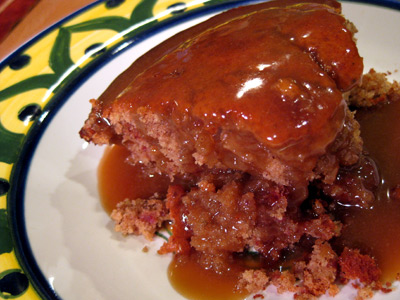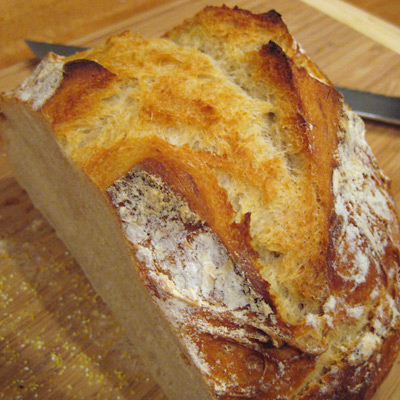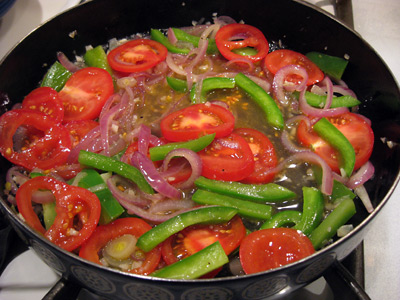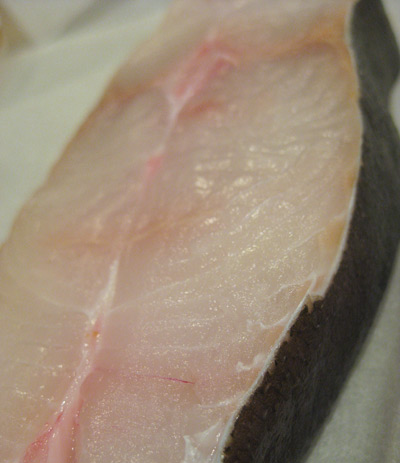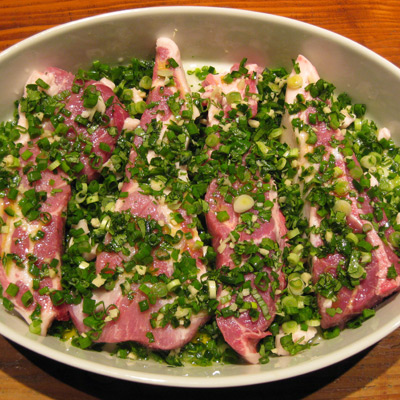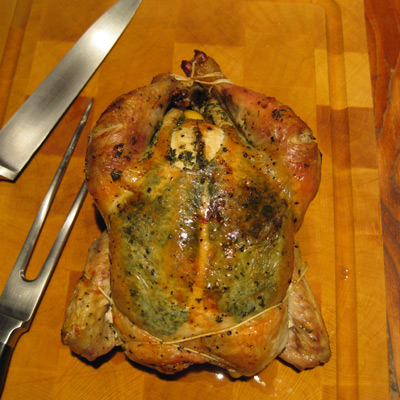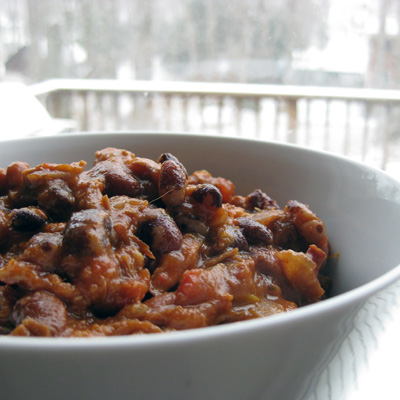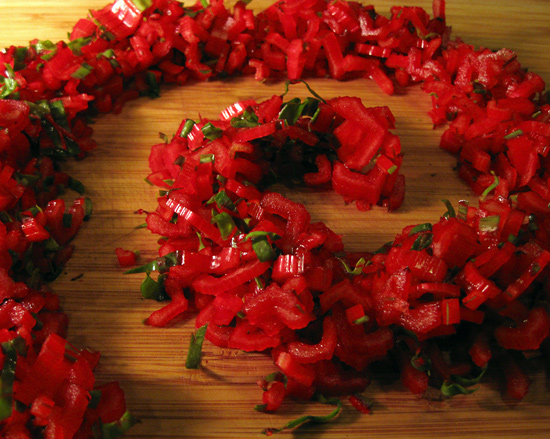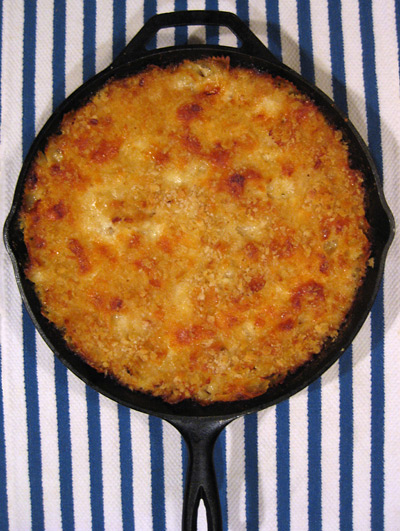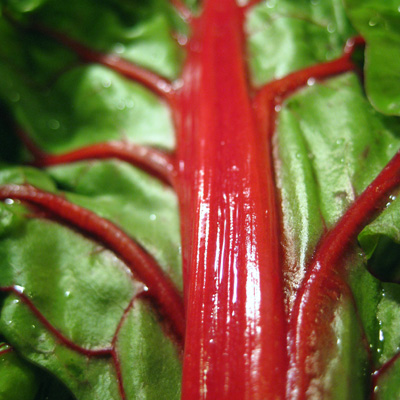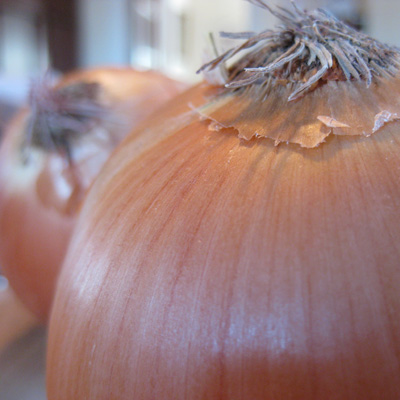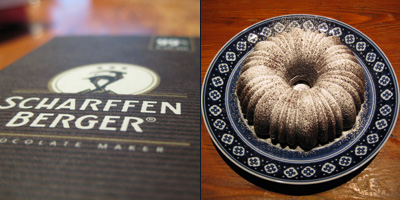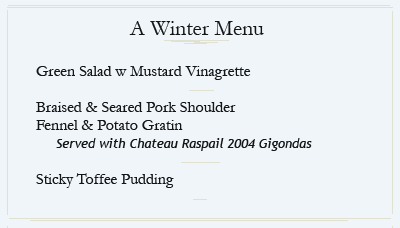
Picture a room with a roaring fireplace, the clink of silverware and careful placement of a wine glass, and the low murmuring of well-dressed guests enjoying their food to the detriment of general conversation.
Now make the room smaller. No, even smaller – don’t worry, I won’t be offended. Take away the fireplace (I wish!), silverware (never did justify splurging on that), and most of the guests (oh yes, and the well-dressed part). You see, when most of your friends have kids, one needs to provide more than 24 hours notice, which in turn requires being organized. Somehow the only thing I was organized about was the food (what a surprise, my wife says).
Still, we managed to throw a little ad-hoc dinner party on Friday night. The cornerstone of the meal, a braised and seared pork shoulder, I will share here. A pork shoulder does not require a lot of hands-on attention, but it does demand time. Time to season. Time to braise. And best of all, time to eat over the course of a luxurious meal with good company. I did not take the time to do much in the way of photography, but you will forgive me, won’t you?

Braised and Seared Pork Shoulder
As always, start off with the best ingredients you can. I had picked up a 5lb, on-the-bone pork shoulder from Fleishers, which carries the best pork I have found in this part of the country. I don’t have a picture of this particular cut, but as you can see in my Pork Shoulder Braised w Dried Chiles post, Fleishers leaves the skin and fat on the shoulder. Leave it on! Just score it with a sharp knife in a criss-cross fashion through the skin and into the fat (if not already done) so you can rub in salt and spices.
Dry Rub
1/2 tsp coriander seed
1/2 tsp mustard seed
1/2 tsp black peppercorns
1/2 tsp cumin seed
approx 2 tbsp salt
Braise
5 lb on-bone pork shoulder (or slightly smaller boneless)
1 large spanish or vidalia onion, roughly chopped
3 medium carrots, roughly chopped
2 celery stalks, roughly chopped
1/2 tsp juniper berries
2 bay leaves
3 cups of homemade chicken stock (or water)
One to three days before you are making the braise, wash and dry the pork shoulder. If the skin and fat remains on the cut, score it in a criss-cross fashion with a sharp knife. Grind up the coriander, mustard, pepper and cumin seeds. Rub about 2 tbsp of salt all around the pork shoulder, then rub in the ground spices. Wrap it back up and place back in the fridge until you are ready to cook the braise.
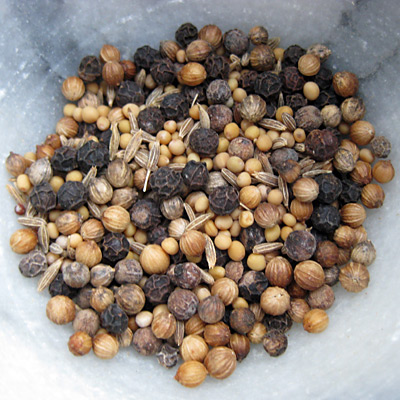
On the day of the braise, remove the shoulder from the fridge and let it come to room temperature for about 20 to 30 minutes. Pre-heat the oven to 325F.
Scrape off as much of the dry rub as you can and reserve the spices (on the side, or just spoon into the chicken stock you will be using).
On high heat, heat up a couple tbsp of olive oil in a dutch oven big enough to hold the shoulder. Get the oil hot enough that a drop of water sizzles and pops, then sear the shoulder on all sides for about 2 minutes a side. Turn the heat down to low, and remove the pork shoulder to the side.
Toss in the onion and stir so that it does not burn in the still-hot dutch oven. Cook for a few minutes until it starts to turn translucent, then pour in a little of the chicken stock to deglaze the bottom of the pot.
Place the pork shoulder on top of the onions, and scatter in the carrots, celery, juniper berries, and bay leaf. Pour in the chicken stock (or water) and turn up the heat to bring the liquid to a simmer. Make sure the spices you took off the shoulder before searing are added back in.
Cover the pot and place in the oven and braise for about 4 hours, turning the shoulder once or twice. If you feel like the liquid is bubbling a little too hard, lower the heat further another 10 or 15 degrees.
Completing the dish
When the braise is done, carefully remove the shoulder, now very tender, to a carving board. Remove the fat and skin from the top of the shoulder (it should slide off very easily), and place to the side (if you desire, you can make a lovely heart-attack-inducing crackling out of this by adding some more salt and spices and tossing back in a 450F oven on a baking tray, until crispy).
Skim and remove the liquid fat from top of the braising liquid. Using an immersion blender, blend together the braising liquid and vegetables remaining in the pot into a thick gravy (if no immersion blender, remove several large spoonfuls of liquid and vegetables to a food processor and puree).
Carefully carve 3/4 inch slices from the pork shoulder. It will fall apart some, but that is fine; this dish is not about looking neat, but rather tasting amazing. Heat up a large non-stick frying pan on high heat, and then sear both sides of your pork shoulder slices for about 30 to 60 seconds per side. Plate, pour the gravy on top, and serve. This pairs nicely with a solid Rhone red wine.
Other menu notes:
The bulk of the meal is very rich, so if you want a starter, keep it very light. I recommend a small green salad with a mixture of radicchio and lettuce, a few sliced cherry tomatoes, and possibly some endive and/or walnuts. Whip up a dressing with olive oil, red wine vinegar, a tiny dash of balsamic vinegar, grain mustard, salt, pepper, and dried basil or thyme. I like to serve this with a crisp white wine or a fairly dry sparkling wine.
The potato and fennel gratin was a larger version of the recipe you can find in this post (link), albeit using more half-and-half than heavy cream, a bit more fennel than before, and jarlsberg cheese instead of gruyere.
The pork shoulder recipe was inspired by this one from an old Gourmet, but I made a fair number of changes. I did like their idea of searing the braised meat at the end, and enjoyed the extra texture this added to the mouthful, however if you want to omit this step the braise will be completely delicious without.
Lisl finished off the meal by making a sticky toffee pudding from a Jamie Oliver recipe. It was delicious but I know she wanted to make some changes, so we’ll post our version when it comes to life.
We finished off the meal with tea and a few of us partaking in Acquavite, an Italian pear brandy. Yes, it was an indulgent night.
